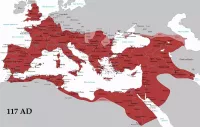Islam is a monotheistic religion centered on the Quran and the teachings of the Prophet Muhammad. Its followers, called Muslims, constitute the world's second-largest religious group. Key tenets include belief in one God (Allah), prayer, charity, fasting during Ramadan, and pilgrimage to Mecca. Muhammad is considered the last prophet in a line including Abraham and Jesus. The Quran is believed to be the literal word of God as revealed to Muhammad. Islamic practice encompasses various aspects of life, guided by religious law.
1900: Muslims comprise 12.3% of the global population
In 1900, Muslims were estimated to comprise 12.3% of the global population.
1914: Muslim Population Growth in Sub-Saharan Africa
By 1914, the resulting urbanization and increase in trade in sub-Saharan Africa brought Muslims to settle in new areas and spread their faith, likely doubling its Muslim population between 1869 and 1914.
1924: Abolishment of the Ottoman Caliphate
In 1924, the Ottoman Caliphate was abolished after the dissolution of the Ottoman Empire following World War I. The subsequent Sharifian Caliphate fell quickly, leaving Islam without a Caliph.
1960: Death of Said Nursi
In 1960, Said Nursi (born 1877), the founder of the Nurcu Sunni movement, died. The Nurcu movement incorporates elements of Sufism and science.
1969: Establishment of the Organisation of Islamic Cooperation (OIC)
In 1969, the Organisation of Islamic Cooperation (OIC) was established, consisting of Muslim-majority countries, after the burning of the Al-Aqsa Mosque in Jerusalem.
1990: Muslims comprise 19.9% of the global population
In 1990, Muslims were estimated to comprise 19.9% of the global population.
2005: Growth of Islam in Europe due to immigration
In 2005, Islam in Europe experienced growth primarily due to immigration and higher birth rates of Muslims.
2010: Projected gain of 3 million Muslims through conversion by 2050
Between 2010 and 2050, Islam is expected to experience a modest gain of 3 million through religious conversion.
2016: Islam accounts for 4.9% of Europe's population
In 2016, Islam accounted for 4.9% of the total population of Europe.
2020: Pew study on religious switching
According to a 2020 Pew study, about 1% of adults raised Muslim leave the faith, while an equal proportion—about 1%—convert to Islam from other religions.
2020: Muslims comprise 25.6% of the global population
As of 2020, about 25.6% of the global population, or about 2 billion people, were Muslims. A Pew study from 2020 found that the global Muslim population was the fastest-growing religious group over the decade.
2050: Projected gain of 3 million Muslims through conversion by 2050
Between 2010 and 2050, Islam is expected to experience a modest gain of 3 million through religious conversion.
2050: Estimated near-equality of Muslims and Christians
It is estimated that by 2050, the number of Muslims will nearly equal the number of Christians around the world, due to the young age and high fertility rate of Muslims relative to other religious groups.
2050: Projected Muslim population at 29.7%
Projections suggest that by 2050, Muslims will comprise 29.7% of the global population.
Mentioned in this timeline
Africa is the second-largest and second-most populous continent comprising of...

World War I a global conflict between the Allies and...

An empire is a political structure consisting of a dominant...

War is defined as an armed conflict involving the organized...
Trending

3 months ago Jamie Lee Curtis Celebrates 'Freakier Friday' with Fan Event and Lookalike Screening

4 days ago Jason Bateman's Sister Justine; Amy Poehler's SNL Chimpanzee Scare Detailed.
2 hours ago Flamengo's Brasileirão Title Chase and the Atlético Mineiro Rivalry: A 2025 Showdown

4 months ago Selena Gomez: Bathrobe Pose, Rare Beauty Fragrance Launch, and Stunning Halter Dress
7 days ago Walter Isaacson discusses Jefferson's 'all men' and his book 'The Greatest Sentence'

2 months ago Kushner and Witkoff Broker Gaza Peace Deal: Hostage Recovery Secured by Netanyahu
Popular
Aftyn Alyssa Behn is an American politician currently serving as...

William Franklin Graham III commonly known as Franklin Graham is...

Candace Owens is an American conservative political commentator and author...

XXXTentacion born Jahseh Dwayne Ricardo Onfroy was a controversial yet...

Marjorie Taylor Greene known as MTG is a U S...

Cristiano Ronaldo often nicknamed CR is a Portuguese professional footballer...